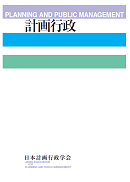Volume 31, Issue 2
Displaying 1-16 of 16 articles from this issue
- |<
- <
- 1
- >
- >|
Public Participation into River Planning and Management
lntroductory Remark
-
2008Volume 31Issue 2 Pages 1-2
Published: June 15, 2008
Released on J-STAGE: April 05, 2024
Download PDF (2190K)
Special Articles
-
2008Volume 31Issue 2 Pages 3-9
Published: June 15, 2008
Released on J-STAGE: April 05, 2024
Download PDF (9314K) -
2008Volume 31Issue 2 Pages 10-15
Published: June 15, 2008
Released on J-STAGE: April 05, 2024
Download PDF (8006K) -
2008Volume 31Issue 2 Pages 16-23
Published: June 15, 2008
Released on J-STAGE: April 05, 2024
Download PDF (10718K) -
2008Volume 31Issue 2 Pages 24-28
Published: June 15, 2008
Released on J-STAGE: April 05, 2024
Download PDF (6615K) -
2008Volume 31Issue 2 Pages 29-36
Published: June 15, 2008
Released on J-STAGE: April 05, 2024
Download PDF (10355K)
Research Paper
-
2008Volume 31Issue 2 Pages 37-44
Published: June 15, 2008
Released on J-STAGE: April 05, 2024
Download PDF (9934K) -
2008Volume 31Issue 2 Pages 45-53
Published: June 15, 2008
Released on J-STAGE: April 05, 2024
Download PDF (11449K) -
2008Volume 31Issue 2 Pages 54-63
Published: June 15, 2008
Released on J-STAGE: April 05, 2024
Download PDF (13227K) -
2008Volume 31Issue 2 Pages 64-71
Published: June 15, 2008
Released on J-STAGE: April 05, 2024
Download PDF (9536K)
Research Note
-
2008Volume 31Issue 2 Pages 72-78
Published: June 15, 2008
Released on J-STAGE: April 05, 2024
Download PDF (9087K) -
2008Volume 31Issue 2 Pages 79-84
Published: June 15, 2008
Released on J-STAGE: April 05, 2024
Download PDF (7531K)
Local and Regional Planning
-
2008Volume 31Issue 2 Pages 85-91
Published: June 15, 2008
Released on J-STAGE: April 05, 2024
Download PDF (9064K)
Book Review
-
2008Volume 31Issue 2 Pages 92
Published: June 15, 2008
Released on J-STAGE: April 05, 2024
Download PDF (1490K) -
2008Volume 31Issue 2 Pages 93
Published: June 15, 2008
Released on J-STAGE: April 05, 2024
Download PDF (1358K) -
2008Volume 31Issue 2 Pages 94
Published: June 15, 2008
Released on J-STAGE: April 05, 2024
Download PDF (1241K)
- |<
- <
- 1
- >
- >|
